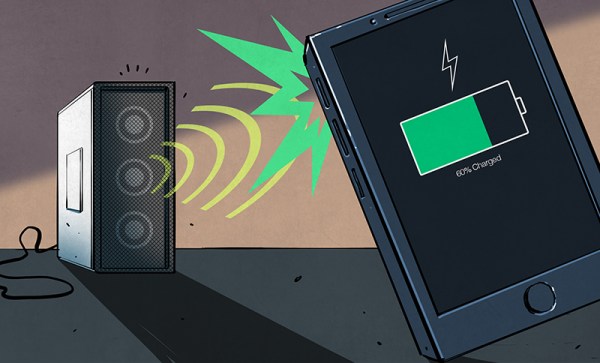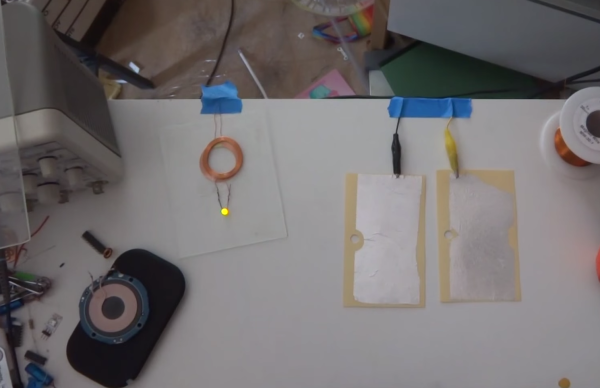The future is wireless power, or so say a thousand press releases in my spam folder, and with very few exceptions every single system of wireless power delivery has fallen flat on its face. Except for a few niche cases – RFID tags, Wacom tablets and the S Pen, and the Qi inductive power mats for cell phones – the future of wireless power hardly looks bright, and in some cases seems downright dangerous. No one seems to grasp that wireless power transfer is much more inefficient than using a wire, and the inverse square law only makes everything worse.
Now there’s a new wireless power technology that’s a strange mix of running in stealth mode and sending press releases to every tech outlet on the planet. It’s called uBeam. This company says it will deliver wireless power to the world, but it’s not doing it with giant Tesla-inspired towers of power, radios beamed directly at devices, induction, magnetic resonance, or even light. uBeam transmits power via sound, specifically high intensity ultrasound. uBeam has never demonstrated a prototype, has never released any technical specs, and even some high-profile investors that include [Mark Cuban] have not seen the uBeam working. Despite running in a ‘stealth mode’, it has garnered a lot of press, and has been featured on TechCrunch dozens of times. This may just be a consequence of CrunchFunds’s investment in uBeam, but there’s still more Google News results for a technology that hasn’t even been demonstrated than a reasonable person would expect.
In what is perhaps the greatest breakdown ever posted on the EEVForums, [georgesmith] goes over what uBeam is, how the technology doesn’t make sense, and how far you can take a business before engineers start to say, ‘put up or shut up.’ [georgesmith]’s research goes over just some of what makes uBeam impractical, but digging even further reveals how insane uBeam actually is.
Continue reading “Ultrasonic Power Transfer: UBeam’s Curious Engineering”
















